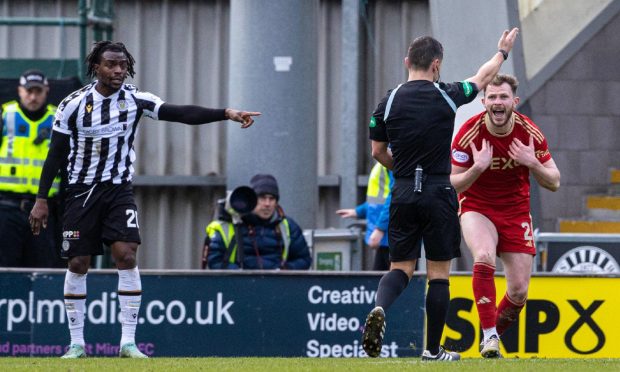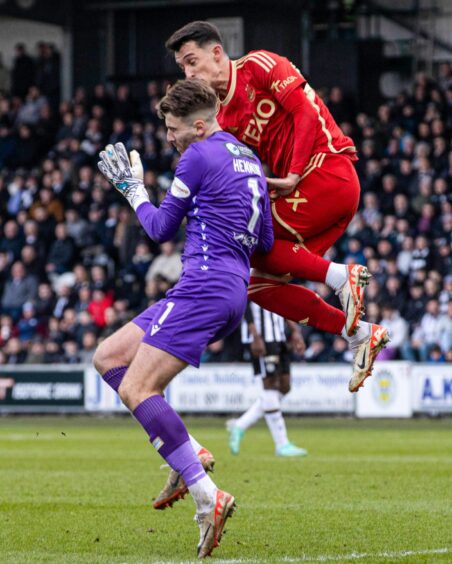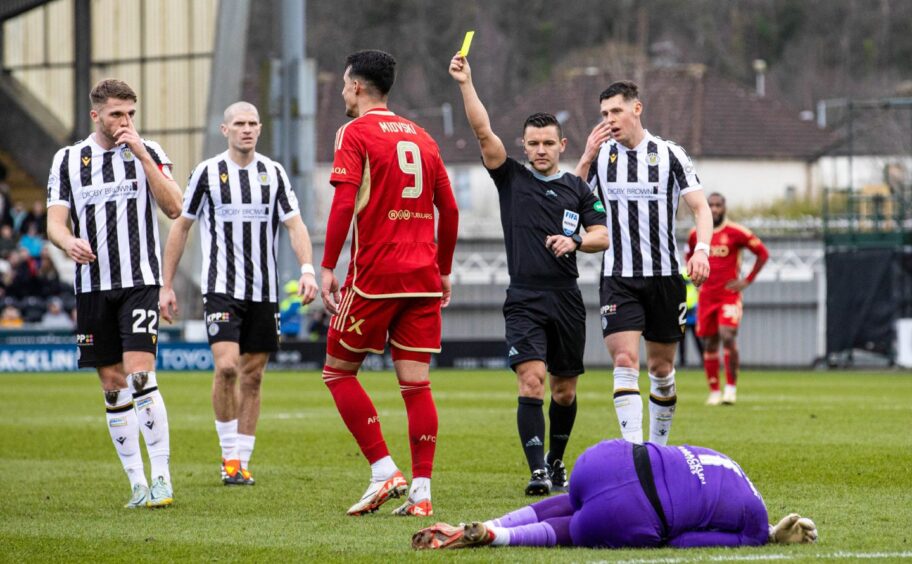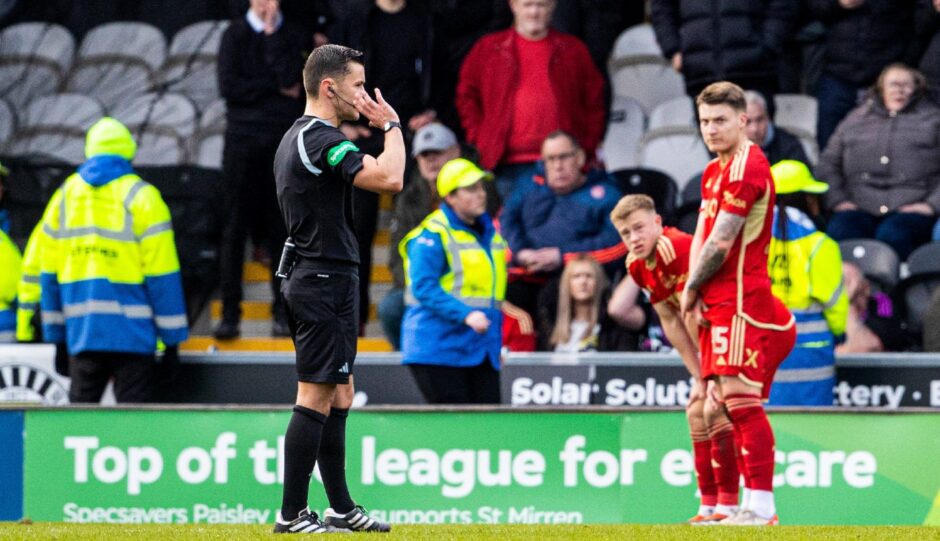Aberdeen conceded two injury-time goals against St Mirren in Paisley to lose 2-1 and prolong their winless run – but how did referee Nick Walsh, and Kevin Clancy on VAR, perform?
With the added pressure of Fifa president Gianni Infantino in attendance, visitors Aberdeen would take a very early lead at the SMISA Stadium, with Connor Barron scoring a stunning goal in the first minute.
The first refereeing flashpoints of the game were VAR checks, most notably a ridiculously-long penalty check against Dons skipper Graeme Shinnie for a challenge inside the Reds’ area.
It was a good challenge – there was definitely contact with the player, but he won the ball, and no penalty was ultimately awarded.
There have been too many VAR reviews this season which seem to be searching for something to penalise, instead of focusing on clear-and-obvious errors. And the one against Shinnie wasn’t the only one.
Ref Nick Walsh inconsistent with cards and fouls
The officials’ performance would not improve.
Bojan Miovski was harshly booked after charging down Buddies keeper Zach Hemming as the goalie went to clear the ball upfield.
There was very little – if any – contact, and Hemming jumped straight back to his feet as soon as referee Walsh produced the caution.
Walsh’s use of his yellow card was incredibly inconsistent throughout.
Aberdeen’s James McGarry was booked for his first foul, which saw him haul down his man after being beaten.
In my opinion, it was a yellow – he stopped his man from moving forward and putting a dangerous ball into the box.
However, two minutes earlier, Miovski cleverly roll the ball past Alex Gogic on the edge of the St Mirren box.
The striker would have got a shot away, but was brought down – however, no yellow was given.
Throughout the match there were so many soft fouls being awarded, for both teams, which is fine, but you have to be consistent. The referee severely lacked consistency on these calls, too.
I would’ve liked to have seen Walsh let a lot more go.
It’s Scottish football, teams are going to be physical. Let them get on with it, instead of blowing up for every small push.
Bizarre offside ruling against Bojan Miovski
There was also a very strange offside decision given in the second half.
Aberdeen striker Miovski was clearly offside when a ball was played forward.
But the St Mirren defender took the ball down, stalled on it, took two touches and then Miovski stole the ball off of him.
He did not interfere with play before this – the defender took three touches before Miovski was even close!
Penalty call was right, but VAR shouldn’t be making decisions for referees
The most important incident occurred in the 90th minute, though, with Aberdeen still leading 1-0, and sparked the Buddies’ comeback to win the game.
Jamie McGrath made a great headed clearance at the back post, with the Dons’ Nicky Devlin and St Mirren’s Toyosi Olusanya chasing the ball down.
There was a collision between the two players, with the referee awarding a free-kick to the hosts.
My initial reaction was that it was just a coming-together – two players going for the same ball and tangling.
A VAR review followed, though, which took another four minutes.
I was surprised ref Walsh was not sent to the monitor to review the foul and the point of contact.
VAR official Clancy clearly simply told Walsh a penalty was to be awarded.
Having seen a replay of the incident, it was definitely in the box.
For me, the St Mirren player initiates the contact – he actually kicks into the leg of Devlin, not the other way round.
But I can understand why a penalty was given.
However, the referee should have wanted – and have been required – to review the footage himself.
It gives the decision credibility, it gives the process greater clarity and shows the referee is still the one making the decisions.
It is getting very frustrating how VAR is refereeing games.
Finlay Elder was a registered referee for six years and a category 5 official from 2019, with experience in the Highland League, Juniors and Club Academy.




Conversation